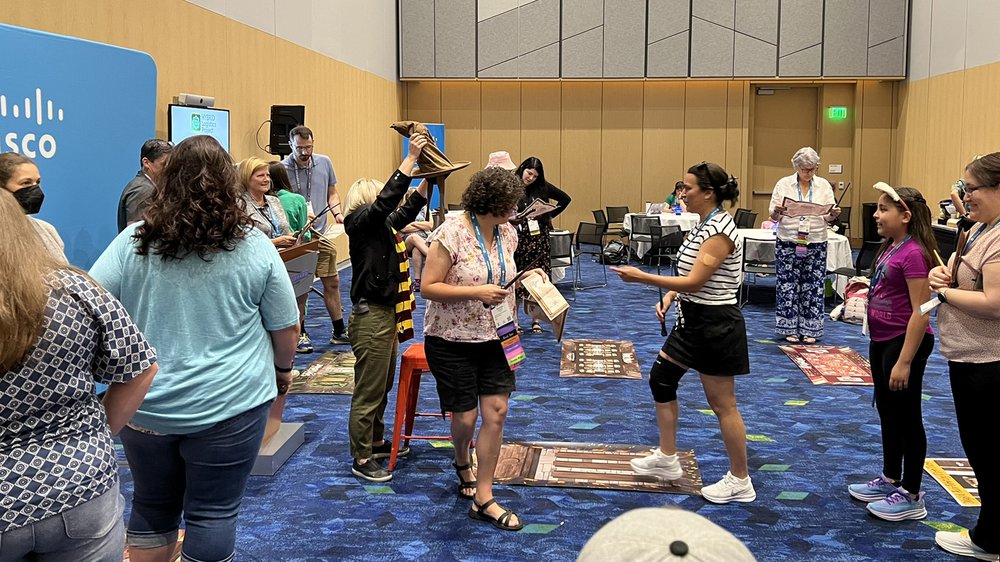Cisco hosted a novel Wizarding Challenge at ISTE that packed each session with educators enjoying learning about Flex Learning Logistics through a modeling exercise. At one point the room was so packed, there was some worry by fire marshals it would go over capacity.
Some educators were chosen by the wizarding hat for student roles starting in House Slytherdor, others for House Gryffinwall. Others were teachers, quickly learning what they would be teaching about Shunds, shadow creatures with various abilities to aid wizards with the right spells.
The students starting in either math (the dark arts) or language (divination), attached their independent study from their Houses. They were learning the language of the Shund, which included how Shunds have an interesting transposition of numbers for letters.
Once students were complete with study, they would enter another area of the wizarding world, a magical time-turner, and enroll for the next class moment using the spell “Enrollikus” and lighting up their wands – which also made fun sounds.
The time-turner would auto-cohort the students into small groups based on their pace, and in the game, when they arrived to accrue to the first two students for cohort one. That cohort would be called over to have their “class,” then released back to their house for their next lesson to study. A second cohort would have already been accruing, and the cycle would repeat.
When teachers were not teaching in a live class because a cohort had been calendared by the magical time-turner how to make invisibility cloaks out of a collection of Shund shadow creatures, they were helping other students, free to roam as needed.
A few times fast students were done with all their dark arts and divination lessons and through several class sessions even while others were yet to get on their first lesson of their second subject.
The fastest were challenged to use their time wisely on practicing wand work or heading out to fly on their imaginary brooms.
Educators at ISTE had a lot of fun. Many went home with copies of the marauder’s map instructions. They all got magical wands and big smiles.
The point of it all was that spatial-temporal AI, a new type of intelligent calendaring, was presented through the game as a way to get schools to use time and space. A significant difference in connectivity would be needed by teachers making such adaptations in classrooms, or whole schools changing to rearrange their entire master schedules and spaces. Cisco spoke to many of their technologies that would need to be considered in the mix.
Learning Counsel News co-hosted the wizarding challenge, helping educators understand the whole vision of personalization of learning based on pace that does not sacrifice the human teaching parts – just does them differently with smaller cohorts and a separation of the “study time” done in homerooms (houses in wizarding world) and live verbal instruction teaching.
The excitement about the demonstration and wizarding challenge continues with teachers and schools interested in the Flex Learning Logistics Project.
Tune in below for a short video showing educators experience during the game.











